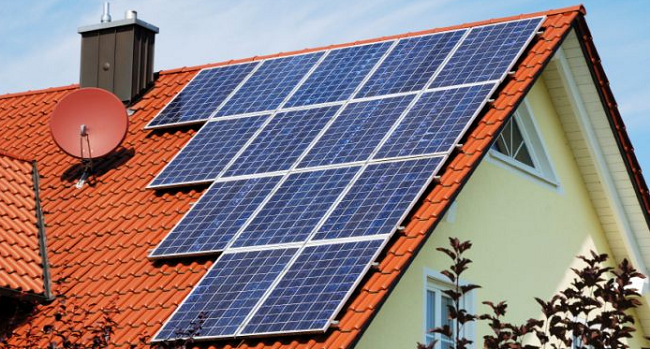
Net Metering to boost small-scale power systems
The Energy Commission is creating a golden environment and opportunities for individuals to make investments in small solar projects for their homes and sell excess power for cash, with the introduction of a Net Metering Code (NMC) for grid-connected small power systems.
The commission is currently finalising a net metering code (a regulatory framework) to provide guidelines and financial incentives for small-scale power producers from renewable sources.
The code is the regulation or ‘rules of engagement’ that will establish the technical standards and specifications for making small producers grid-compatible; how to interface with the grid; the frequencies at which the producers must supply to the grid; the legal requirements and so on.
It will specify equipment specification, the responsibilities of the small-scale producer, as well as that of the utility.
The Board Chairman of the Energy Commission, Dr Kwame Ampofo, told the Daily Graphic during a duty tour in Germany that the net metering regime was expected to create the enabling environment and the climate conducive for individuals to take advantage of rooftop solar systems and sell the excess power to the national electricity grid for good returns.
It serves as a financial incentive which needs to be legislated. The NMC, therefore, sets out the ‘dos and don’ts” of the net metering regime. It specifies the rate of pay and how to accumulate the gains.
He said the net metering regime would have twin impacts. First, it would ensure that individuals achieve self-sufficiency in energy consumption in their households. Secondly, as they sell the excess power to the national grid and make good returns, it ensures stability and reliability of the grid as well.
Generation challenges
The government has for a long time been the sole investor in power generation. Generation costs, however, began rising after the country’s single largest generator, the Akosombo Hydroelectric Dam started yielding low output due to water shortage in the reservoir since the mid-1980s.
The country has not only since diversified the sources of generation by introducing combined cycle thermal plants which run on crude oil and natural gas, but has also licensed and partnered Independent Power Producers (IPPs) to invest in power production as a commercial venture.
There are several IPPs which include Asogli (560 megawattsMW); Bui (400MW); Karpower (225MW); Ameri (250MW); CENIT (126MW), TICO (330MW) and currently BXC, which is producing 20MW from solar PVs. Cenpower is also constructing a 350MW thermal plant at Kpone, near Tema.
How net metering will work
It is to encourage private small-scale private producers (for self-consumption), not necessarily IPPs, to produce more than enough to satisfy their needs and sell the excess into the national grid.
“The only way to do this is to provide the opportunity and the process of interconnecting with the grid so they can supply and receive from the grid,” Dr Ampofo explained.
The net meter is a special one that is able to read both ways; when a customer is receiving from the grid or supplying to it. The meter, therefore, reads both ways and nets off the prices. At the end of the month, the net metering customer receives bills of their net, which could be revenue to them or debts to pay to the utility company.
Essentially, the net meter helps consumers to lower their bills, while providing them the opportunity to cash back on what they supply to the grid. This development should therefore be of great interest to the consumer.
According to the Energy Commission, the ultimate objective is to encourage people to install solar panels far larger than what they need in their homes so that their net position will always be a gain to them — much the same as generating income by selling small amounts of solar-generated power to the electricity grid.
“This means that as households cash in to invest in the small solar power systems, they help boost supply to the national grid. This will also eliminate the incident of ‘dumsor’ in the long term since people will rather develop their independent power as opposed to depending on the grip. It can shift the general preference to supplying to the grid, rather than receiving from it,” he suggested.
Currently, there is the National Grid Code which sets the technical standards of how the IPPs and the utilities interconnect to the grid in order not to undermine its integrity.
Rooftop programme and Germany’s example
The Energy Commission has a mandate to ensure energy efficiency in the country, while plugging the energy generation deficit. It is to promote the achievement of 10 per cent of total electricity generated or consumed in the country from renewables and the Energy Commission.
With the National Solar Rooftop Programme (a programme in which the government is providing 500-peak watts solar panels for homes as subsidy) set to reach some 200,000 households to reduce the load on the national grid by about 200MW, the logical sequence is to provide the avenues for those with excess to sell to the grid for income.